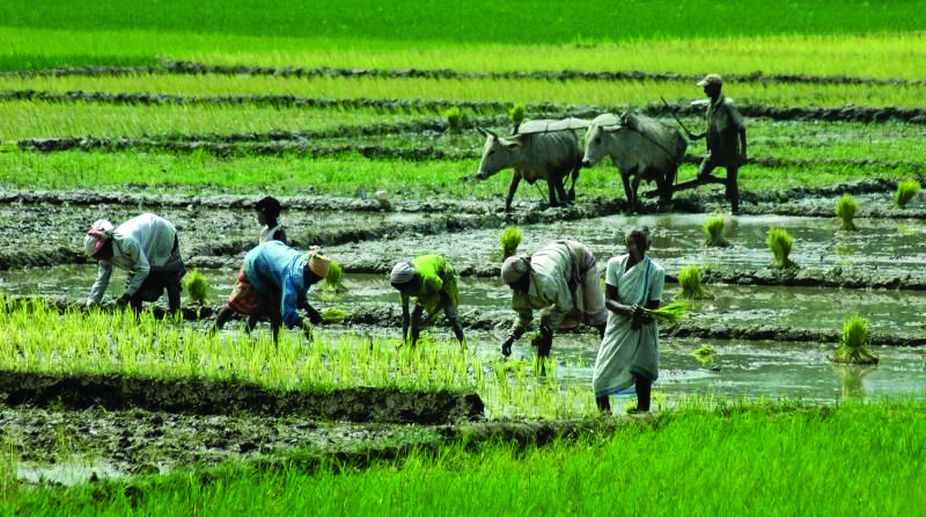K’taka Police arrests 42 farmers in Byadgi red chilli violence case
He said that another team has also been sent to Nellore region of Andhra Pradesh to nab those who indulged in violence.

Representational Image.
The Minimum Support Price can have a impact on the country’s economy. A steep hike in MSP (more than the wholesale prices across all states) will provide an incentive to producers to sell their produce to the government procurement agencies and hence, the supply to the open market will be reduced and the price will rise.
In the absence of an effective Public Distribution System (PDS), this may endanger food security of substantial sections of the rural poor. Moreover, the rural poor who are the net buyer of foodgrain, will be adversely affected owing to the erosion of real incomes with the rise in prices.
The resultant rise in prices of agricultural commodities, used as raw materials in processing and manufacturing, shall severely affect the overall growth rate and the global competitive capacity of the country.
Advertisement
MSPs shall have a definite effect on the cost of public procurement, distribution and buffer stocks of PDS foodgrain. This means an increased subsidy bill. The increase in MSP can also result in inflation.
MSPs are like an option or insurance, and kicks in only if market prices fall below the threshold. NSSO data reveals that more than 75 per cent of Indian households are not aware of the MSP of crops grown by them.
Moreover, around 93 per cent of farmers in our country do not have access to MSPs as the government does not procure on time and farmers have to resort to distress sale. Farmers in India are not a homogeneous segment.
Landholdings are getting fragmented. According to the 70th survey of the NSSO (2014) among the agricultural households, 69.44 per cent are classified as marginal farmers and 17.14 per cent are small farmers. The proportion of marginal and small farmers works out to be 86.58 per cent.
The average size of marginal holdings in only 0.41 ha (one acre) and that of small holdings is 1.4 ha. Given their economically unviable size, and small quantities of marketable surplus, there would be a marginal increase in the total net income of these farmers from agriculture even if the Swaminathan MSP is allowed to them.
Governments procure foodgrain ~ mainly rice and wheat ~ at MSPs in order to release the procured stocks at much lower prices through PDS. This would mean an increased subsidy bill. Since procurement is an open-ended system, buffer stocks continue to increase.
Thus the government becomes the biggest hoarder of food, thanks to the annual ratcheting up of MSP. The rise in stock means rise in storage cost, loss due to deterioration in quality and consequential rise in food subsidy. It is a reality that traders (middlemen) and rich farmers predominantly earn a profit from the procurement operation, while poor and marginal farmers are victimised by exploitative prices.
The MSP also has the added problems of distorting the crop-choice on land. This is evident from the declining groundwater table in Punjab. Which become major paddy producing area though it is, traditionally, not a paddy-producing region.
As per the Shanta Kumar Committee report, MSP benefits only 6 per cent of farmers. Considering its deleterious effects, there was a move to freeze MSP in 2002. In the present era of market-driven development, the CACP and public procurement system are liable to be more vulnerable.
In the initial stages of the Green Revolution, the main objective of government intervention in the agricultural market, buying foodgrain at MSP and so on was maximisation of food production to make the country self-sufficient and building up of buffer stocks.
But continuing such intervention, especially by increasing MSP every year, serves the interests of a few groups rather than society as a whole. The interventionist policy is determined by the interest of farming groups which ultimately determine the fate of political parties in the country.
They clamour for price support for their products and other subsidies, but they are less interested about encouraging the government to undertake any long-term solution to mitigate the agrarian crisis and farmers’ distress, especially of the marginal and small agricultural households. Demands for MSP and subsidies are emphasised because they are more visible to voters than the demand for a long-term solution.
Indeed, the MSP is not necessarily a panacea for the problems that plague Indian agriculture. We need to look beyond MSP. Significantly, certain long-term and fundamental reforms of agriculture were recommended in 2004-06 ~ land reforms, access to irrigation facilities, productivity of land and labour, credit, insurance, public investment in agricultural infrastructure, education and skill development of farmers, promotion of rural non-farm sectors, setting up of village level labour intensive agro industries etc.
We need to create a farmers’ group in collaboration with marketing NGOs, SHGs, agri-processors, modern retailers and agro-exporters. Since the volume of productive assets owned by poor farmers is falling over time, the income earned by these assets is also deceasing.
To arrest this decline, they must be given other productive assets, like education, skill, health, infrastructure, and economic activities. Only then will those in agriculture be able to earn a higher income through higher yields. Otherwise, we will spend public money, increase the yield and bear witness to the diminishing income of farmers.
In the words of the Nobel Laureate, Muhammad Yunus; “Poor people are bonsai people. There is nothing wrong with their seeds. Our society never gave them a base to grow on.
All that is required to get poor people out of poverty is for us to create an enabling environment for them.” Likewise, our distressed farmers do not need market-distorting MSP or subsidies. They need an enabling environment and scope to grow like tall trees.
(Concluded)
The writer is a retired IAS officer
Advertisement